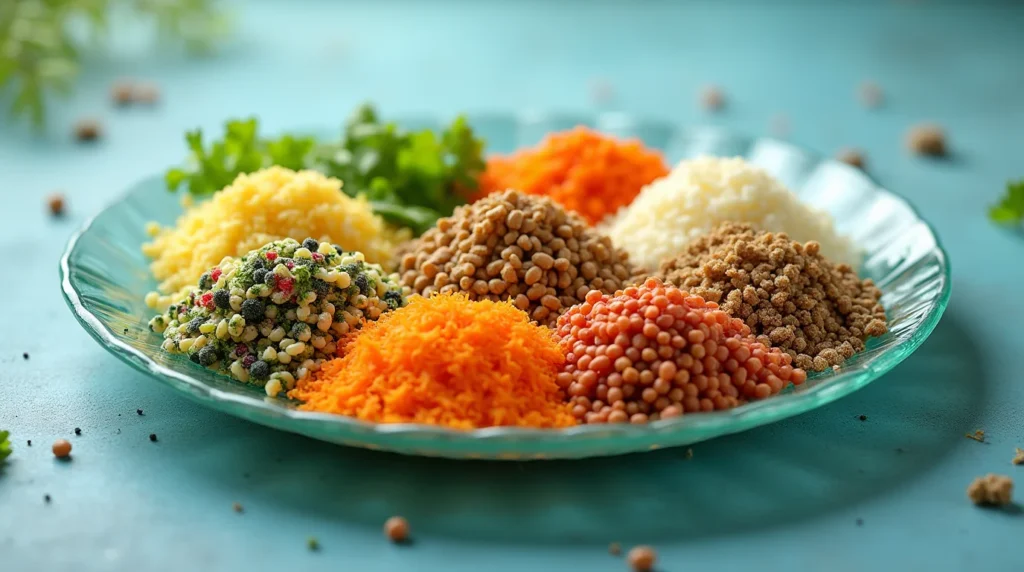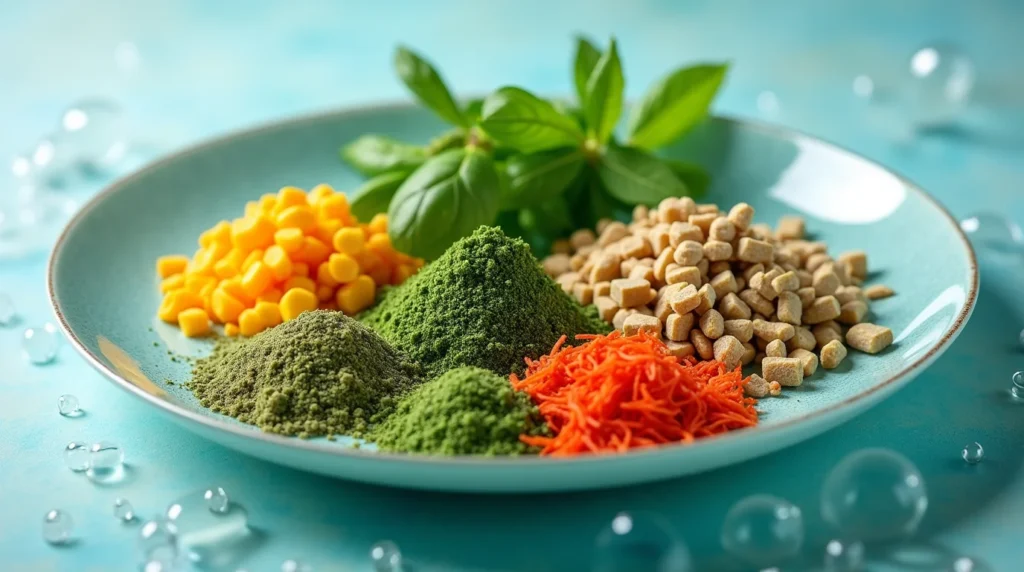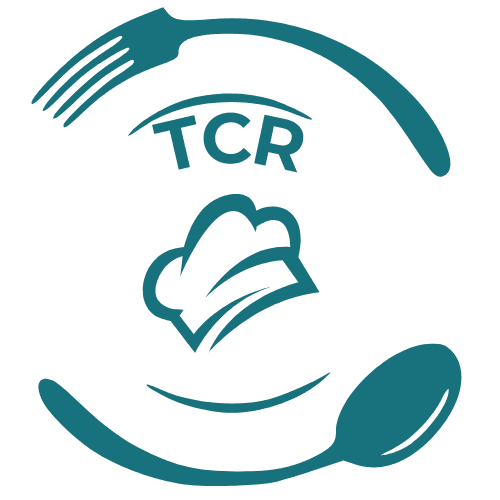
Quick & Easy Homemade Fish Food Recipe
Share this recipe
As an avid aquarium enthusiast, I know how important it is to provide your beloved fish with a balanced and nutritious diet. The cost of commercial fish food can quickly add up, leaving a significant dent in your wallet. That’s why I’m excited to share with you a simple, cost-effective, and homemade solution that will not only nourish your finned friends but also bring you the satisfaction of crafting their meals from scratch.
In this comprehensive guide, you’ll discover the benefits of making your own fish food. You’ll learn the essential ingredients to include and a step-by-step recipe. Preparing your fish’s meals at home allows you to take control of their nutrition, save money, and reduce your environmental impact. All while providing them with a delicious and wholesome diet. Let’s dive in and unlock the secrets to creating the perfect homemade fish food recipe for your aquarium.
Key Takeaways
- Homemade fish food is a cost-effective and nutritious alternative to commercial options
- You can control the ingredients and ensure your fish receive a balanced diet
- Preparing fish food at home reduces your environmental impact compared to store-bought options
- The recipe is simple and easy to follow, making it accessible for aquarium enthusiasts of all levels
- Customizing the recipe to cater to different fish species is possible for optimal nutrition
Ingredients per Serving:
– 1/4 cup spirulina powder
– 1/4 cup shrimp meal or fish meal
– 2 tablespoons kelp powder
– 1 tablespoon calcium carbonate
– 1 tablespoon garlic powder
– 1 tablespoon fish oil or vegetable oil
– 1/2 cup cooked brown rice or oatmeal
Serving Size:
This recipe makes approximately 10 servings of homemade fish food.
Preparation Time:
15 minutes
Cooking Time:
None, this is a no-cook recipe.
Total Time:
15 minutes
Nutritional Facts (per serving):
– Calories: 85
– Protein: 6g
– Carbohydrates: 9g
– Fat: 3g
– Fiber: 2g
– Sodium: 55mg
– Sugar: 1g
Benefits of Making Your Own Fish Food at Home
Preparing your fish’s meals at home offers many advantages. It saves money and lets you control what they eat. This is great for anyone who loves aquariums.
Cost Savings vs Commercial Fish Food
Commercial fish food can be very expensive. It’s especially true for those with many aquariums or big fish. Making your own food cuts these costs down a lot. Ingredients for homemade recipes are cheaper, helping you save money without harming your fish’s health.
Control Over Ingredients and Nutrition
When you make your fish’s food, you decide what goes into it. This means you can make sure they get the right nutrients. Homemade food also avoids harmful additives found in many store-bought options.

Environmental Benefits of Homemade Fish Food
Homemade fish food is better for the planet too. It uses fresh, whole ingredients that are less processed. This reduces waste and helps make your hobby more eco-friendly.
Looking to save money, improve your fish’s diet, or help the environment? Making your own fish food at home is a smart choice. With a bit of time and effort, you can feed your fish well and sustainably.
Essential Ingredients for DIY Aquarium Fish Food
Making your own fish food lets you control what your fish eat. It’s important to pick the right ingredients for a balanced diet. Let’s look at the key parts for a healthy homemade fish meal.
Protein Sources
Protein is key for a healthy fish meal. Use fish meal, shrimp, or krill for the amino acids your fish need. Choose high-quality, sustainable proteins for the best nutrition.
Vegetable Matter
Vegetables add vitamins, minerals, and fiber to your fish’s diet. Add finely chopped spinach, spirulina, or other green leafy vegetables for these nutrients.
Supplements
Supplements like vitamin and mineral powders, calcium, and omega-3 fatty acids complete the diet. They ensure your fish get all the nutrients they need.
Choosing the right mix of protein, plants, and supplements makes great homemade fish food. It keeps your fish healthy and happy.
Basic Equipment Needed for Fish Food Preparation
Preparing your own fish food at home is easy with the right tools. It saves money and lets you control what goes into your fish’s food. Having the right tools and storage is crucial for making healthy, homemade fish food.
Kitchen Tools Required
To start making your own fish food, you’ll need some basic kitchen tools:
- Blender or food processor for grinding and mixing ingredients
- Measuring cups and spoons to ensure precise measurements
- Cutting board and sharp knife for chopping and dicing fresh ingredients
- Baking trays or dehydrator for drying and forming the fish food
Storage Containers and Preservation Methods
Keeping your homemade fish food fresh is key. Use airtight containers like mason jars or Tupperware. Freeze-drying or dehydrating can also help keep it fresh longer.
Safety Equipment Recommendations
When making fish food at home, safety first. Wear gloves to avoid touching ingredients. Use a mask or work in a well-ventilated area with powdery or dusty ingredients. This keeps you safe and your fish healthy.
With the right tools and safety practices, you can make tasty and healthy DIY fish food for your aquarium.
Simple Fish Food Recipe for Beginners
Making your own fish food recipe at home is rewarding and saves money. It ensures your fish get a balanced, nutritious diet. This simple homemade fish food recipe is great for beginners.
This DIY fish food recipe uses easy-to-find ingredients. It’s simple to make and good for your fish. Let’s explore how to make a tasty, healthy meal for your fish.
- Gather the essential ingredients: flakes of high-quality fish, finely ground oats, spirulina powder, and a touch of garlic for flavor.
- In a mixing bowl, combine the fish flakes, oats, and spirulina powder in a 2:1:1 ratio, respectively.
- Add a small amount of water, just enough to moisten the mixture and create a dough-like consistency.
- Knead the dough gently until it’s well combined, then use a rolling pin to flatten it into a thin sheet.
- Cut the sheet into bite-sized pieces or flakes, and arrange them on a baking sheet lined with parchment paper.
- Dry the homemade fish food in a dehydrator or oven set to the lowest temperature, ensuring the pieces are completely dried and crisp.
- Once dried, store the fish food recipe in an airtight container in the refrigerator for up to two weeks.
By making your own homemade fish food, you can customize it for your fish’s needs. This ensures they get a balanced diet. Enjoy giving your fish a wholesome, homemade meal!

Nutritional Components Your Fish Need
Creating a balanced diet for your aquarium fish is key to their health. As an aquarium lover, knowing what your fish need is essential. This knowledge helps you make homemade fish food that keeps them healthy and strong.
Proteins and Essential Amino Acids
Proteins are vital for your fish’s growth and health. They help repair tissues and keep the immune system strong. Use protein-rich foods like fish meal, shrimp, and spirulina in your fish food recipe.
Vitamins and Minerals
Vitamins and minerals are crucial for your fish’s aquarium fish diet. They help with bone and scale development and keep metabolism in check. Add foods like vegetables, fruits, and supplements to your fish’s diet. This ensures they get all the necessary vitamins and minerals.
Healthy Fats and Omega Acids
Fats, especially omega-3 and omega-6 fatty acids, are important for your fish’s fish nutrition. They keep the skin and fins healthy and support overall health. Use flax seed, chia seeds, or fish oil to add these essential fats to your fish’s diet.
“Proper nutrition is the foundation for a thriving aquarium ecosystem. By understanding the specific dietary needs of your fish, you can create a customized, homemade fish food that will help them thrive.”
Step-by-Step Fish Food Recipe Guide
Making your own fish food is rewarding. It lets you tailor the nutrition to your fish’s needs. Follow this guide to make a nutritious fish food recipe from start to finish. This ensures your fish get a balanced diet.
- Gather the Ingredients: Get the key parts for your homemade fish food. This includes high-quality proteins, vitamins, minerals, and healthy fats. Important ingredients are fish meal, spirulina powder, shrimp, and omega-rich oils.
- Prepare the Protein Source: Cook or process your protein-rich ingredients, like fish or shrimp, well. This makes them safe and easy for your fish to digest.
- Mix the Dry Ingredients: Put the dry parts, like fish meal, spirulina, and vitamins or minerals, in a big bowl. Make sure they’re evenly spread.
- Incorporate the Wet Ingredients: Add the wet parts, like fish oils or pureed veggies, to the dry mix. Mix well to get a crumbly texture.
- Shape and Dry the Food: Shape the mix into molds or roll it into pellets. Dry them in a dehydrator or oven at a low temperature. This sets the fish meal preparation.
- Store Properly: After drying, store the fish food in an airtight container. Keep it in a cool, dry place to keep it fresh and nutritious.
By following this guide, you can make a customized, high-quality fish food recipe. This will keep your fish healthy and happy.

“Homemade fish food allows me to provide my aquarium inhabitants with the precise nutrients they need, while saving money compared to commercial options.”
Storage Tips and Shelf Life
Keeping your homemade fish food fresh is crucial. Whether you’re making DIY fish food or home food for fish in aquarium, the right storage is key. It helps keep the food nutritious and fresh.
Proper Storage Methods
Here are some tips for storing your homemade fish food well:
- Put the food in an airtight container, like a glass jar or BPA-free plastic. This stops air and moisture from getting in.
- Store the container in a cool, dry spot. Avoid places with direct sunlight or heat, as they can make the food spoil faster.
- For longer storage, freeze the food. Freezing can make it last several months longer.
Signs of Spoilage to Watch For
Watch for these signs to keep your homemade fish food fresh and safe:
- Discoloration: If the food looks different, it might be bad.
- Odor: A bad smell means the food has spoiled and should be thrown away.
- Mold or Sliminess: Mold or a slimy feel means the food is contaminated and not safe for your fish.
By storing your DIY fish food right and watching for spoilage, you can keep it fresh longer. This ensures your fish get the best nutrition.
Common Mistakes to Avoid When Making Fish Food
Making your own fish food can be rewarding and save money. But, there are common mistakes to avoid for the best results. By steering clear of these, you can make a healthy fish food recipe.
One big mistake is not balancing the food’s nutrients. Not having the right mix of proteins, vitamins, and fats can harm your fish. Always follow trusted recipes and check resources to meet your fish’s needs.
Another mistake is bad storage. Spoiled food can harm your fish. Use airtight containers, refrigerate or freeze, and watch for signs of spoilage.
- Neglecting to properly balance the nutritional components
- Improper storage leading to spoilage and quality issues
- Failing to thoroughly clean and sanitize food preparation equipment
- Relying solely on a single ingredient or source of nutrition
- Ignoring the specific dietary requirements of different fish species
Lastly, not cleaning your equipment can introduce harmful bacteria. Make sure to disinfect all tools and surfaces. This keeps your fish food safe and healthy.
By avoiding these mistakes, you can make homemade fish food that’s good for your fish. It’s not only cost-effective but also ensures a balanced diet for your aquatic pets.

“Mastering the art of making your own fish food is a game-changer for the health and wellbeing of your aquatic pets.”
Customizing Recipes for Different Fish Species
Creating your own fish food at home means tailoring it to your fish’s needs. Different fish, from tropical to cold water, need different foods for health and growth.
Tropical Fish Variations
Tropical fish like guppies and tetras need a lot of proteins and vitamins. Use spirulina, shrimp, and egg yolks for these nutrients. Adding garlic can also help their immune system and digestion.
Cold Water Fish Requirements
- Cold water fish, such as goldfish, need more plant-based foods. Try peas, zucchini, and leafy greens for fiber.
- Adding omega-3 fatty acids from flaxseed or fish oil is good for them too.
- But, don’t give them too much protein-rich food. It can cause problems in their health and the water.
Knowing what your fish need helps you make the best food for them. Try different ingredients to find the right mix for your fish.
Feeding Schedule and Portion Control
Keeping a good feeding schedule and portion control is key for your aquarium fish’s health. Feeding them the right amount at the right time helps avoid overfeeding. This can prevent water quality issues and other problems. Set up a regular feeding routine that matches your fish’s natural eating habits and needs.
When it comes to aquarium fish diet, it’s better to give less. Don’t overfeed your fish, as this can lead to bad water quality. Instead, give them small, frequent meals. Use the right portion sizes based on how many and how big your fish are. This way, your fish get the nutrients they need without dirtying the home food for fish in aquarium.
Every fish species has its own food needs, so adjust your feeding plan accordingly. Look for advice or talk to experienced aquarium people to make a feeding plan for your fish. By finding the right balance, you can keep your fish healthy and happy. And you’ll also keep your underwater world thriving.









